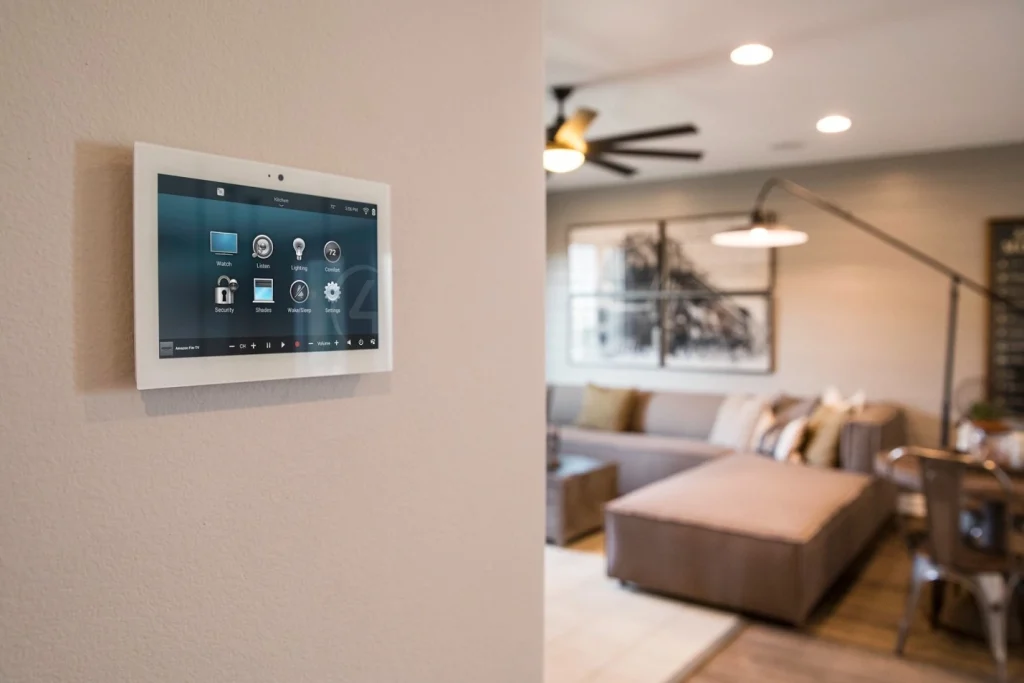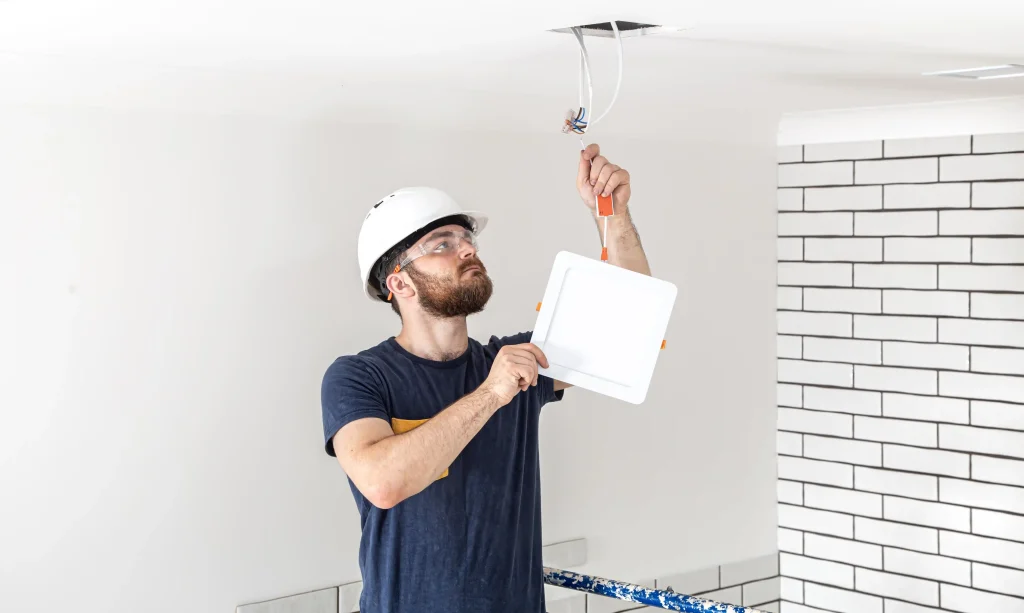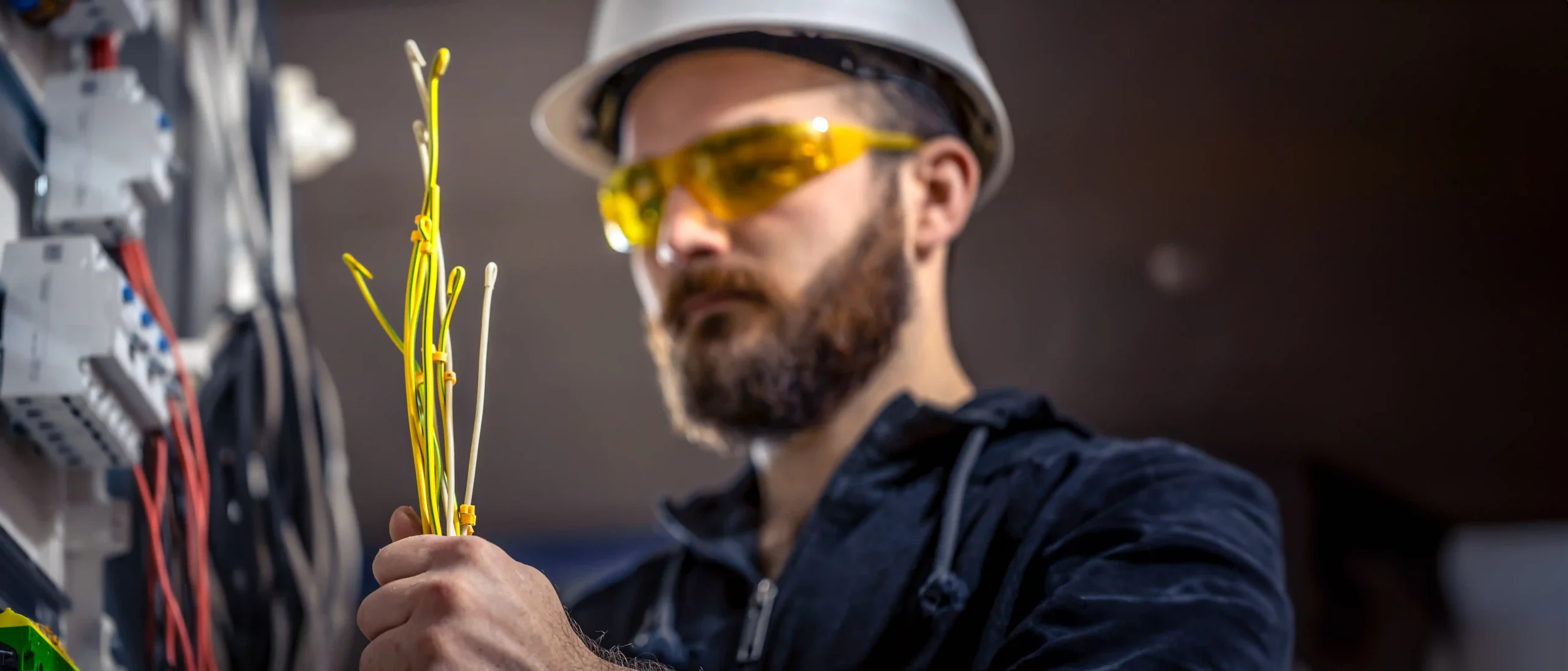Smart lighting is quickly becoming a go-to solution for energy-conscious households in Albany and Mount Barker. With modern Light Fittings in Albany now equipped with smart technology, homeowners can enjoy efficient, automated lighting that saves both energy and money. According to energy.gov.au, lighting accounts for approximately 5–10% of the average Australian home’s electricity use. This makes it a significant area for potential savings, especially when older halogen or incandescent bulbs are replaced with energy-efficient LED alternatives.
Upgrading to smart light fittings goes beyond just saving electricity—it’s about creating a more comfortable, controlled living environment. Features like dimming, motion sensors, and programmable schedules help reduce unnecessary usage without sacrificing convenience or style. Whether you’re in a traditional Albany weatherboard home or a modern Mount Barker development, smart lighting offers a practical path to lower energy bills and a more sustainable lifestyle.
Why Go Smart with Your Light Fittings?
Smart lights aren’t just a flashy gimmick – they’re built to save energy. Think of smart fittings as tiny energy managers for your home. For example, modern LED smart bulbs use roughly 75–80% less power than old halogen or incandescent globes. That means a light that used to gulp 60–75 watts might now only sip 10–15 watts to shine just as bright. And with LEDs often lasting 5–10 times longer than halogens, you really cut down on replacements and waste.
But the savings don’t stop at the bulb. Smart systems let you automate lighting so it’s on only when you need it. Motion and daylight sensors can turn off lights in empty rooms or dim indoor lights when plenty of sunshine floods in. Timers and schedules mean your porch or kitchen light isn’t burning energy all night – it comes on at dusk and off by bedtime. In short, smart light fittings are like having a clever assistant who flips switches for you (and also ensures you never forget to turn them off).

Here’s the bottom line: smart lighting systems can reduce your lighting energy use by dozens of percent. Studies and industry reports find that intelligent lighting can cut lighting energy consumption by 35–70%. Even simple steps like dimming can be powerful. For instance, dimming a smart bulb to 70% of its maximum reduces power draw by about half. And if you go wild with colour, some smart bulbs consume way less on certain hues – one test showed deep blue light used up to 79% less power than full white. We won’t ask you to live in a blue or red living room, but it’s fun proof that these lights have tricks up their sleeves.
Key Energy-Saving Features of Smart Light Fittings
Smart fittings pack several energy-smart features. Let’s break down the big ones:
- LED Technology: Nearly all smart bulbs use LED tech. LEDs are inherently more efficient – they turn almost all electricity into light (instead of heat). Swapping every halogen bulb for an LED can instantly slash lighting power use by around 75%. (Pro tip: even traditional LED light fittings without the “smart” controls still save loads over old bulbs.)
- Dimming and Color Control: Smart lights dim beautifully and can change colour. Dimming not only sets the mood but saves energy. At 50% brightness a bulb uses roughly half its wattage. Custom scenes or “recipes” with softer tones can reduce usage dramatically. So a warm, dim breakfast light or cool office light is also kinder to your meter.
- Motion/Occupancy Sensors: Many smart fittings have or support sensors. These instantly cut power when no one’s around. Imagine your hallway or pantry light turning off a minute after you pass through – no more forgotten lights burning away! Studies show adding sensors can drop usage by 20–40% in spaces where lights often stay on by accident.
- Scheduling/Timers: Set it and forget it. You can schedule your lights to mimic the sun (on at sunrise, off at bedtime) or to turn on only for an hour after arriving home. This is great in Albany or Mount Barker, where evenings can be long and dark in winter – you won’t leave lights on all night by mistake, and your security lights only work when needed.
- Integration with Natural Light: Smart fittings can sync with daylight. For example, some setups use a sensor or your home automation to dim indoor lights when a sunny day brightens the room. More glass and skylights also tie in; one tip is to maximize natural light (install skylights or white surfaces) so fixtures are off longer.
- Remote Control: This is convenience plus savings. Using your phone or voice assistant, you can turn off lights from the couch or even when you’re away – so no more guessing if you left the back patio light on all day. It’s easy to hit “lights out” before bed or from holiday.
Altogether, these features mean your home uses far less electricity on lighting than a conventional setup. A simple table illustrates the impact:
| Smart Feature | Energy Benefit | Example Use |
| LED bulbs | ~75–80% less energy vs old bulbs | Replace halogen globes with LEDs |
| Dimming | Cuts power proportionally (50% brightness → ~50% wattage) | Set 70% brightness to halve usage |
| Occupancy sensors | Switch off lights in empty rooms automatically | Hallway/kids’ room lights off after no motion detected |
| Timetables | Ensures lights are off when not needed | Porch lights on at sunset, off at 11pm |
| Daylight sensors | Dims indoor lights when there’s enough sun | Living room lights dim on sunny afternoons |
| Colour choice | Certain hues use less energy (deep blue saves ~80%) | Use warm soft white or colours for ambience |
Using even a few of these tricks can be like cutting your lighting bill in half or better. For busy Albany families or eco-conscious Mount Barker homeowners, that means hundreds of dollars saved each year (and fewer carbon emissions, to boot).
Installing Smart Light Fittings in Albany and Mount Barker
Wondering where to start? Here are some practical steps to bring smart lighting into your Albany home:
- Upgrade to LED Smart Bulbs or Smart Switches: If you have a favorite fixture (say, in the living room), simply replace its bulbs with Wi-Fi or Zigbee smart bulbs. Brands like Philips Hue or IKEA Tradfri work well (and are available in Australian stores). These screw in like normal bulbs but connect to your phone. Alternatively, you can install a smart light switch or smart dimmer in place of your old wall switch – this makes even regular bulbs “smart” because the switch controls them via Wi-Fi or radio. Many local electricians in Albany and Mount Barker can retrofit switches, or you can DIY if you’re handy.
- Choose the Right Hub or App: Some smart bulbs connect directly to your home Wi-Fi. Others need a hub (e.g., Philips Hue Bridge). For a handful of lights, Wi-Fi bulbs that talk straight to your phone are simplest. If you plan a whole-house system, a central hub (like Samsung SmartThings, Amazon Echo, or Apple HomeKit) can integrate lights, sensors, speakers, etc. Check compatibility – e.g., if you have lots of Zigbee bulbs, a Zigbee hub is helpful.
- Set Up Automation: Once installed, play with schedules and scenes. For example, program your Mount Barker sunrise-sunset times (there are local APIs or just “sunrise/sunset” triggers in apps) to adjust lights automatically. Create a “Good Night” scene that turns off all indoor lights at 11pm, or a “Movie Time” scene with dimmed living room lights and off elsewhere.
- Use Sensors Wisely: Hallways, bathrooms, laundry – these often benefit from motion sensors. In Western Australia’s cooler months, these spaces might get chilly if lights wait to be manually turned off; sensors fix that. In Albany’s longer summer evenings, outdoor motion-sensor lights are both energy savers and security assets. Mount Barker’s rural homes could use smart garden lights that only switch on when you’re home, saving on solar/battery use.
- Consider Solar Integration: If you have rooftop solar (gaining popularity around Albany), sync smart lights to use more power in daylight. For example, set bright outdoor lights to run on battery power at night and indoor lights during peak solar production. Smart home systems can do this automatically, making your “light fittings in Albany” greener by using solar instead of grid power.

Finally, be mindful: smart bulbs often need standby power (about 0.5W each) to stay connected. This is tiny compared to their brightness, but it’s why even turned-off smart lights use a dash of energy. Stick to reputable brands and check specs (newer models often advertise “<0.5W standby”). Also, keep your router on – smart lights rely on it – but most routers use only a few watts, which is negligible compared to leaving multiple lights on all night.
Light Fittings in Albany: Style and Savings Go Hand-in-Hand
“Energy-efficient” doesn’t mean boring. In fact, light fittings today come in styles that would impress even design gurus. Whether you’re into sleek minimalist LED downlights, vintage Edison-style smart globes, or statement smart chandeliers, there are eco-friendly options. In Albany, light fittings in Albany range from high-end kitchens on York Street to quaint cottages in Middleton Beach – and all can enjoy the smart glow-up.
Pick warm LED tones for living spaces and cool tones for work areas (good for focus in home offices). Use track lights or spotlights to accent artworks or plants – and those LED spots can dim or shift color based on the time of day. Don’t forget outdoor fixtures: many modern exterior lights (porch, path, yard) now have built-in smart control and motion sensors. These cost a bit more upfront but pay back quickly by not staying on when nature’s lighting is enough.
Mount Barker’s climate can be a little cooler, so think about using smart lights that complement natural light. For example, install smart skylights or light tubes alongside smart bulbs. Then program your system so that on sunny winter days, interior lights dim automatically, meaning your home harvests every ray. Albany’s long summer nights? Program garden lights to automatically taper off by 10pm to let you enjoy the stillness – no fumbling for switches.
In short, smart light fittings in Albany and Light Fittings in Mount Barker let you have both luxury and practicality. Your “lights off” joke will literally save cash, and your smart lighting setup becomes the coolest gadget among your friends.
A Brighter, Smarter Future for Your Home
Switching to smart light fittings is one of the easiest ways for any homeowner in Albany or Mount Barker to start saving energy now. It’s a win-win: you enjoy more convenience (and style!) while lowering your bills and carbon footprint. And with WA’s energy programs (like the Switch Your Thinking campaign) sometimes offering advice or audits, there are plenty of local resources to guide you.
So next time you’re updating decor or planning a home improvement, give your lights an upgrade too. It could be as simple as buying a “smart bulb” as a treat for yourself, or as ambitious as installing a whole-home automated lighting system. Before you know it, those light fittings in Albany homes you see around you won’t just brighten rooms – they’ll brighten your savings. After all, in our sunny corner of Australia, every kilowatt we save is a ray of hope for the planet.
Have questions or tips about smart lighting? Drop a comment below and join the conversation. Let’s light the way to a greener, smarter future—one bulb at a time!
FAQs
What exactly is a smart light fitting?
A smart light fitting is basically an LED bulb or fixture that connects to your smartphone, voice assistant or smart hub. It lets you control lights remotely (on/off, dimming, color), set schedules, and use sensors. This means lights can turn on only when needed and at lower brightness, which saves energy compared to always-on old bulbs.
How much energy can smart lighting actually save?
Quite a lot! By switching to smart LED lights and using features like timers and motion sensors, many households cut their lighting costs by up to half or more. Estimates suggest smart systems can reduce lighting energy use by roughly 35–70%. Even simple acts like dimming bulbs to 70% can slash a bulb’s power draw by ~50%. Over time, these savings really add up on your bill.
Do I need special wiring or a hub for smart lights?
In most cases, no. Many smart bulbs just screw into your existing fixtures like normal globes. They either connect via Wi-Fi or a small hub (like Philips Hue Bridge, or apps like Google/Alexa). For a few lights, Wi-Fi bulbs (no hub) are easiest. If you want more control or voice commands, you might use a hub or smart speaker. For wall switches, a smart switch usually replaces your current switchplate. Often an electrician can do the swap, or DIYers can install them like any switch. Either way, you don’t need to rewire your whole house – just replace bulbs or switches one at a time for instant benefits.

